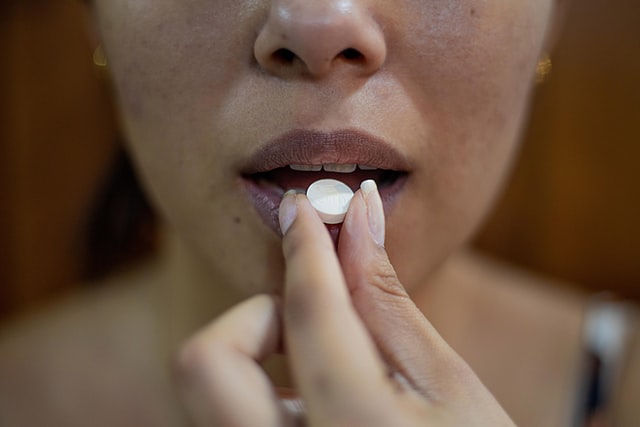Suboxone is a prescription drug used to treat opioid addiction, which can be dangerous if misused. This article will discuss what Suboxone withdrawal is, how long it lasts, and the symptoms and side effects you’ll likely experience when taking it.
People get hooked on substances for a variety of reasons. Some of the common factors that influence them to abuse drugs are genetics, environment, and social surroundings.
Addiction is a recurrent, persistent brain disease characterized by compulsive drug use despite its consequences. People struggling with addiction build up a tolerance to the drug to the point that they feel sick when they abruptly stop taking it.
With millions of Americans addicted to opioid drugs, the U.S. Food and Drug Administration (FDA) approved several medications for its treatment. One of these is Suboxone.
Suboxone Definition and Its Effects
Suboxone is a medication that mixes buprenorphine and naloxone to treat opioid dependence. The implementation of MOUD or “Medications for Opioid Use Disorder” is known to reduce the risk of life-threatening overdose by about 50%, as well as the possibility of nonfatal overdoses that are equally distressing and dangerous.
Similar to other drugs used in MOUD, Suboxone is prescribed as part of a holistic treatment approach, which includes counseling and other behavioral therapies.
If you’re wondering how Suboxone works, it does so by attaching itself to the same receptors in the brain like other opiates—oxycodone and heroin. It blocks these drugs in your system to dampen your intoxication, preventing you from having unhealthy cravings.
How can Suboxone become addictive?
Suboxone is often abused by people addicted to short-acting opioids, like heroin. They use it in between doses to prevent withdrawal symptoms.
Since it still operates on the same opioid receptors in the brain and causes a surge of dopamine, the medicine can still give a sense of euphoria. The high it provides may be milder than other full agonist opioids, but it lasts longer.
So when does it become dangerous?
Suboxone contains the opioid antagonist naloxone, making the drug abuse-deterrent. When taken as prescribed, naloxone stays inactive; however, when the medication is altered, injected, or inhaled, the antagonist blocks opioid receptors, which results in withdrawal.
Managing withdrawal on your own can be dangerous. It makes you more prone to relapse and overdose. That said, quitting cold turkey is not recommended. It is better to undergo medical detoxification instead to wean off the drug safely.
Suboxone Withdrawal Symptoms
Suboxone effectively helps in treating opiate dependence. It is typically prescribed for long periods after you stop taking an addictive drug. Abrupt cessation of this medication can produce the same withdrawal effects as other opioids, such as:
- Anxiety
- Depression
- Headaches
- Nausea
- Vomiting
- Body aches
- Muscle pains
- Insomnia
- Irritability
- Fatigue
- Gastrointestinal problems
- Fever
- Chills
- Sweating
- Difficulty concentrating
- Drug cravings
Suboxone Withdrawal Timeline
Each person’s withdrawal timeline can be different. If you taper off the drug or gradually reduce your dose, you will have milder symptoms. However, quitting cold turkey can bring more severe symptoms.
Here’s what to expect:
First day: You may feel the first withdrawal symptoms between 6 to 12 hours after your last dosage. During this time, the common symptoms are anxiety, fatigue, and discomfort.
Three days: As your withdrawal symptoms start to manifest, it will continue to worsen until it reaches the peak period. You may experience fever, body aches, nausea, vomiting, and diarrhea.
Seven days: Over the next few days, you’ll start to feel better. By the end of the first week, you’ll be free of most of your symptoms. Some symptoms, particularly psychological ones, may persist.
Two weeks: Symptoms like anxiety, depression, and drug cravings may continue even after you’ve reached your acute withdrawal stage. To address these issues, you need to seek help from an addiction treatment center or therapist.
One month: After a month without Suboxone, you will experience intense cravings and depression. This is your most vulnerable period, as you face a high risk of relapse.
How Long Does Suboxone Withdrawal Last?
In general, you can feel the immediate effects of Suboxone withdrawal within 24 hours after your last dose. Meanwhile, its peak stage occurs within 72 hours and may resolve within seven days. Psychological symptoms like cravings and depression could last for a month.
The duration of withdrawal differs from case to case, based on the following:
- The duration of use
- Dosage taken
- The quality of support you’re receiving if you’re doing medical detox
Take note that if you’re using other drugs besides Suboxone, your withdrawal symptoms may be more intense, and it could last longer.
What Helps with Suboxone Withdrawal

Source: Unsplash.com
If you’re looking for a way on how to detox from Suboxone safely, you need to consult with a medical professional to determine your individualized treatment plan.
Detox is known to be effective in minimizing health emergencies and preventing relapse. During detox, a treatment professional will supervise you when tapering down Suboxone doses. This can ease the intensity of your withdrawal symptoms and help your body adjust to a life without it.
In addition to detox, your doctor may also recommend taking medications and attending counseling and behavioral therapies. The drug will normalize brain chemistry, while therapy can help beat the psychological aspects of addiction.
You may also do the following to manage Suboxone withdrawal:
- Keeping a balanced diet
- Regular exercise
- Keeping yourself hydrated
- Trying a new hobby or social activity
- Taking time to unwind
Where to Get Addiction Treatment

Source: Unsplash.com
Getting sober may be challenging to overcome, but it is possible. If you want to avoid overdose or relapse, you need to participate in a treatment program offered by your trusted provider.
If you’re looking for a rehab center in Arizona, you may consider Buena Vista Health and Recovery Center. Our addiction specialists will be there to assist you when dealing with your withdrawal symptoms and other issues that contribute to your dependence.
Suboxone can be addictive, leading users to become dependent on the drug to feel normal. When Suboxone leaves a person’s system, they may experience withdrawal, including physical and psychological symptoms. To address these appropriately, you need to undergo medical detox, counseling, and other holistic programs.
Buena Vista offers patient-centered treatments to help you deal with withdrawal from substance use disorders. We treat patients with respect and compassion, paying close attention to their specific needs. If you’re ready to make a change, contact our team to discuss treatment options.
You can contact us at (800) 922-0095, or visit any of our Arizona drug and alcohol treatment centers to start your recovery journey today.
CHANDLER
3033 South Arizona Avenue
Chandler, Arizona 85248
TUCSON
5151 East Pima Road
Tucson, Arizona 85712
SCOTTSDALE
8171 E Indian Bend Rd
Scottsdale, AZ 85250





